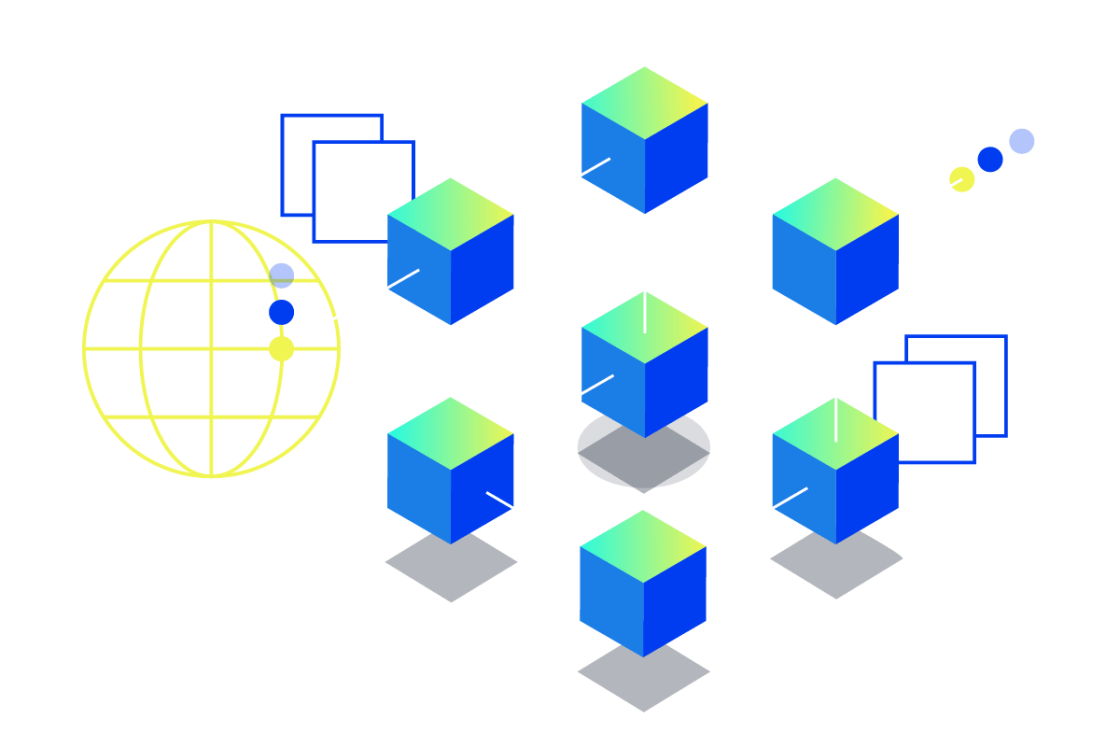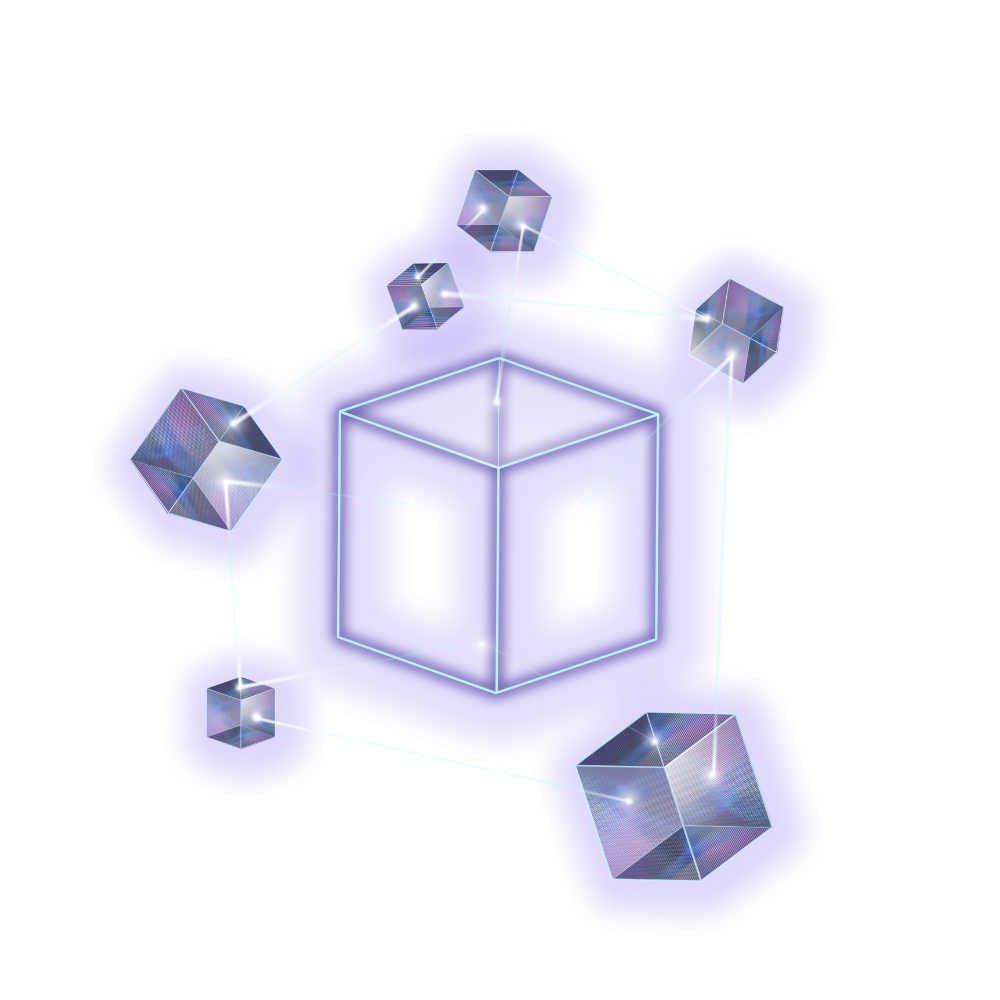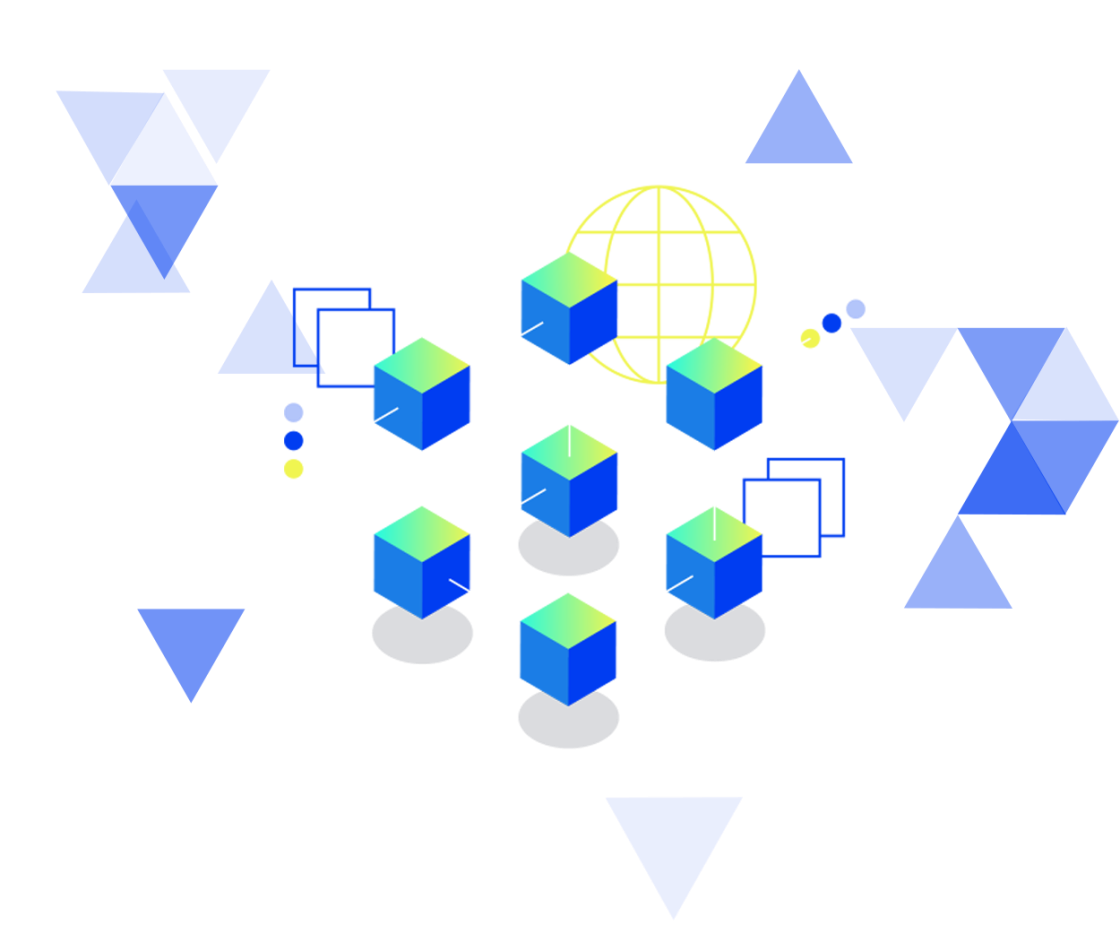What is NFT?
What is an NFT?
Non-fungible tokens, or NFTs, have transformed the digital landscape, bridging the gap between technology, art, and commerce. At their core, NFTs represent unique digital assets verified on blockchain networks, offering proof of ownership and authenticity in a world where duplication is effortless.

This comprehensive guide explores every aspect of NFTs, from their basic mechanics to their wider implications across industries. Whether you're an artist seeking new revenue streams, an investor looking at market opportunities, or a technologist interested in blockchain innovations, understanding NFTs is crucial in today's digital economy. We'll examine their definition, history, uses, and future potential, offering a thorough overview without heavy technical jargon.
Understanding NFTs
An NFT, short for non-fungible token, is a type of digital asset that represents ownership of a unique item or piece of content, such as artwork, music, videos, or even virtual real estate. Unlike fungible assets like cryptocurrencies (e.g., Bitcoin or Ethereum), which are interchangeable and hold the same value, NFTs are one-of-a-kind. This uniqueness stems from their non-fungible nature, meaning another identical item cannot replace each token.

In simpler terms, think of NFTs as digital certificates of authenticity. They use blockchain technology to ensure that ownership is verifiable, transparent, and secure. For instance, if you own an NFT of a digital painting, the blockchain publicly records your ownership, preventing disputes over who truly holds the rights. This has profound implications for creators, as it allows them to monetize digital works in ways previously impossible with traditional media.
The term "non-fungible" draws from economics, where fungibility refers to items that can be exchanged on a like-for-like basis. Money is fungible, a dollar bill is equivalent to any other dollar bill. In contrast, a rare baseball card is non-fungible because its value and characteristics are unique.
NFTs gained mainstream attention around 2021, but their roots can be traced back to earlier blockchain experiments. Today, they encompass everything from collectibles to utility tokens that grant access to exclusive events or communities. Understanding NFTs involves grasping their role in decentralizing ownership, thereby empowering individuals over centralized authorities such as galleries or record labels.
How NFTs Work: Blockchain and Token Standards
NFTs are a Web3 generation service that operates on blockchain technology, a decentralized ledger that records transactions across a network of computers. This ensures immutability—once data is added, it can't be altered, providing a tamper-proof record of ownership.
Most NFTs are built on Ethereum, the leading blockchain for smart contracts, which are self-executing agreements coded into the blockchain. When an NFT is created, or "minted," it's assigned a unique identifier and metadata, such as the asset's description, creator details, and linked files (often stored off-chain on decentralized storage like IPFS for efficiency).
Token standards are crucial here. The most common is ERC-721, an Ethereum standard that defines how NFTs are created, transferred, and managed. It ensures that each token is distinct and includes functions for tracking ownership. There's also ERC-1155, which allows for semi-fungible tokens, useful for items like in-game assets where multiples exist but each batch is unique.
The process begins with a creator uploading their digital file to a platform, which then mints the NFT on the blockchain. Buyers use cryptocurrency wallets to purchase it, and the transaction is recorded permanently. Royalties can be programmed in, so creators earn a percentage on secondary sales automatically.
This blockchain integration addresses issues like counterfeiting in digital spaces. However, it relies on the underlying network's security and scalability, which can lead to high gas fees during peak times.
Key Components of Non-Fungible Tokens
Several elements make up an NFT, all working to ensure that the NFT functions as expected and provides the desired benefits.
- Token ID: First is the token ID, a unique number distinguishing it from others. Metadata provides additional details, like the asset's name, description, and attributes, stored on the decentralized blockchain or linked externally.
- Smart Contracts: A smart contract governs the NFT's behavior, including transfer rules and royalty distributions. The linked asset, be it an image, audio file, or 3D model, is often hosted on decentralized storage to prevent central points of failure.
- Wallet Address: Ownership is tied to a digital wallet address, verifiable by anyone on the blockchain. Provenance tracks the token's history, adding value through transparency and accountability.
- Interoperability: Interoperability is another component; standards like ERC-721 allow NFTs to move between compatible platforms. Finally, utility features, such as access to real-world perks, enhance their appeal beyond mere collectibles.
History and Evolution of NFTs
NFTs emerged from the broader blockchain movement. The concept dates back to 2012 with the introduction of "Colored Coins" on Bitcoin, which added metadata to coins to represent assets. However, true NFTs began with CryptoPunks in 2017, a project by Larva Labs that created 10,000 unique, pixelated characters as ERC-721 tokens on the Ethereum blockchain.
This marked the early adoption of integrating NFTs with blockchain for digital collectibles. Projects like CryptoKitties followed in late 2017, a game where users bred virtual cats as NFTs, causing Ethereum network congestion and highlighting scalability issues. These experiments demonstrated that NFTs can create verifiable scarcity in digital goods.
By 2018-2019, platforms like OpenSea emerged, facilitating NFT trading. Integration with blockchain standards solidified their foundation, paving the way for broader applications.
The Rise in Popularity and Market Boom
The NFT boom exploded in 2021, driven by celebrity endorsements and high-profile sales. Beeple's "Everydays: The First 5000 Days" sold for $69 million at Christie's, thrusting NFTs into the spotlight. Platforms saw billions in trading volume, with collections like Bored Ape Yacht Club creating exclusive communities.
Factors included the COVID-19 pandemic's push toward digital experiences, cryptocurrency surges, and social media hype. NFTs became status symbols, with investors flocking to "blue-chip" projects. Market capitalization peaked at over $40 billion, reshaping the perception of value in digital assets.
Market Volatility and Decline
Post-2021, the market faced volatility. By 2022, trading volumes had plummeted over 90% amid crypto winters, regulatory scrutiny, and economic downturns. High-profile failures, like rug pulls and overhyped projects, eroded trust.
Environmental concerns over blockchain energy use and market saturation exacerbated declines. Yet, this period weeded out speculative elements, leading to more mature applications focused on utility rather than hype.

NFTs in the Art World
NFTs have revolutionized artists' rights by enabling direct monetization without the need for intermediaries. Creators can sell digital art directly to fans, retaining more revenue. Built-in royalties ensure ongoing income from resales, addressing the traditional art market's one-time sale model.
For independent artists, this democratizes access, allowing global reach. However, it also raises concerns about unauthorized minting of others' work, challenging rights enforcement.
Intellectual Property in the NFT Space
Intellectual property (IP) in NFTs is complex. Owning an NFT typically grants rights to the token, not the underlying IP, unless specified. This has led to lawsuits over unauthorized reproductions.
Blockchain's transparency facilitates the verification of originality, but limitations in smart contracts can complicate enforcement. Artists must navigate licensing agreements to protect their creations while leveraging NFTs for exposure.
How NFTs Are Reshaping the Art Market
NFTs are disrupting traditional galleries by enabling virtual exhibitions and fractional ownership. They blend physical and digital art through "phygital" hybrids, expanding markets. Collectors value the community aspect, with NFTs fostering fan engagement and interaction. Overall, they're making art more accessible, though exclusivity remains a draw for high-end buyers.
NFT Marketplaces and Platforms

Leading marketplaces include OpenSea, the largest with diverse collections; Rarible, emphasizing community governance; and Foundation, focused on curated art. NBA Top Shot specializes in sports highlights, while SuperRare caters to high-end digital art.
These platforms vary in terms of fees, user interfaces, and blockchain support, with some expanding to multi-chain operations for enhanced accessibility.
How to Buy, Sell, and Create NFTs
To buy, set up a crypto wallet like MetaMask, fund it with Ethereum, and browse marketplaces. Selling involves listing your NFT with a set price or through an auction. Creating requires minting on a platform, upload your file, add metadata, and pay gas fees.
Maximize success by researching trends, building a strong portfolio, and actively engaging with communities. Analyze sales data for pricing and consider the timing of gas fees. For creators, collaborate and promote via social media to build hype.
High-Value NFTs and Their Worth
Iconic sales include Beeple's $69 million artwork and CryptoPunk #5822 at $23.7 million. Jack Dorsey's first tweet sold for $2.9 million, showcasing NFTs' versatility. These demonstrate how cultural significance drives value.
Valuation depends on rarity, creator reputation, utility, and market sentiment. Community strength and historical provenance add premiums. External factors, such as crypto prices and economic conditions, also play a role.
Benefits and Risks of NFTs
Non-fungible tokens (NFTs) present a mix of opportunities and challenges in the digital economy. As blockchain-based assets, they enable new forms of ownership and value creation but also introduce uncertainties. This section examines the key advantages for artists, creators, and investors, alongside the primary risks, offering a balanced perspective for informed participation in the NFT space.
Advantages for Artists, Creators, and Investors
NFTs empower artists and creators by revolutionizing monetization and distribution. A standout benefit is programmable royalties, where smart contracts automatically direct a portion of resale proceeds, typically 5-20%, back to the originator.
Creators also gain access to global audiences through NFT platforms, enabling direct fan engagement and community building. For example, musicians can offer exclusive content, such as limited-edition tracks with added perks, like virtual access or merchandise, thereby converting fans into loyal supporters.
Investors view NFTs as a diversification tool amid volatile traditional markets. They offer potential for appreciation, with some collections yielding significant returns driven by scarcity and cultural relevance. Liquidity in 24/7 secondary markets adds appeal, and many NFTs offer utility, such as event access or virtual world entry, thereby enhancing their value beyond mere speculation.

Risks and Challenges of NFT Investments
NFTs carry substantial risks that can result in financial losses. Market volatility is a major issue; values can surge with hype but plummet during downturns, as seen in the 2021 boom followed by a 95% drop in trading volumes. Speculative fervor often inflates prices based on trends rather than fundamentals, amplifying losses in economic slumps.
Scams proliferate in this decentralized space, including phishing, fake platforms, and "rug pulls" where creators abscond with funds. Regulatory uncertainties compound this, with evolving laws on taxation, securities classification, and cross-border compliance potentially leading to penalties. Environmental concerns arise from energy-intensive blockchains, although shifts like Ethereum's proof-of-stake upgrade mitigate some of the impact; yet, criticism persists and could spur further restrictions.
Intellectual property theft is prevalent, as unauthorized minting of others' work often leads to ownership disputes. Blockchain tracks provenance but doesn't prevent copying, which can require expensive legal action. Low liquidity affects many NFTs, particularly those from niche projects, making them difficult to sell and tying up capital, which is exacerbated by high transaction fees and technological shifts.
Legal and Technical Considerations
In the realm of non-fungible tokens (NFTs), legal and technical factors are pivotal for ensuring secure and compliant operations. These elements address the blockchain's decentralized nature, which, while innovative, introduces complexities for creators, investors, and regulators. Understanding them helps mitigate risks and fosters responsible adoption in digital ecosystems.

Smart Contracts and Their Implications
Smart contracts serve as the automated backbone of NFTs, executing functions such as ownership transfers, minting, and royalty payments without the need for intermediaries. They enhance efficiency by embedding rules directly into the blockchain—for example, automatically distributing a 10% royalty to creators on resales, promoting fair compensation.
Yet, these contracts are prone to bugs and vulnerabilities, which can result in exploits such as unauthorized token minting or theft of funds. High-profile hacks have demonstrated how flawed code can lead to significant losses, emphasizing the need for rigorous audits by specialized firms. Once deployed, smart contracts are immutable, making pre-launch testing and modular design essential to prevent irreversible errors.
Legal Issues in the Digital Art and NFT Space
Legal challenges in NFTs often revolve around intellectual property, taxation, and jurisdictional ambiguities in decentralized systems. Copyright infringement is common, as NFT ownership typically doesn't confer full IP rights, allowing unauthorized minting of others' works and sparking disputes that demand clear licensing agreements.
Taxation varies by region, with NFTs potentially being classified as assets subject to capital gains or income taxes, which complicates reporting for international users. Jurisdictional issues arise from blockchain's global reach, making it hard to apply local laws to disputes or enforce rulings.
Governments are responding with new regulations; for instance, frameworks like the EU's MiCA aim to standardize oversight, combat fraud, and ensure compliance with anti-money laundering regulations. These changes could increase operational costs but enhance market stability, potentially affecting cross-border transactions by imposing stricter verification requirements.
Beyond Art: Other Applications of NFTs
From entertainment to virtual economies, NFTs are becoming increasingly embedded in everyday digital experiences, creating new revenue models and engagement opportunities. This expansion highlights blockchain's potential to disrupt traditional sectors, offering users not just collectibles but functional assets with real-world utility.
NFTs in Gaming and Virtual Real Estate
In the gaming sector, NFTs transform in-game items into verifiable assets that players truly own, allowing them to trade, sell, or transfer them across platforms without developer restrictions. Projects like Axie Infinity exemplify this by letting users breed and battle digital creatures as NFTs, turning gameplay into a play-to-earn economy where participants can generate real income.
This ownership model fosters deeper player investment and community-driven ecosystems, though it also raises concerns about pay-to-win dynamics and market saturation.
Virtual real estate takes this further, with platforms like
Decentraland enabling users to purchase, develop, and monetize parcels of digital land. Owners can build virtual structures, host events, or lease space, mirroring real estate investment but in immersive online worlds.
NFTs in Music, Sports, and the Metaverse
Musicians are leveraging NFTs to sell albums, singles, or exclusive content directly to fans, often bundled with perks like unreleased tracks, virtual concerts, or lifetime royalties. This direct-to-consumer approach bypasses traditional labels, empowering artists to build loyal communities and explore innovative formats, such as dynamic NFTs that evolve in response to listener interactions.
In sports, NFTs power fan tokens and digital memorabilia, granting holders voting rights on team decisions or access to exclusive experiences, such as player meetups. Collectibles from leagues like the NBA, available through platforms like Top Shot, transform highlight moments into tradable assets, thereby enhancing fan engagement.
The Future of NFTs
As non-fungible tokens (NFTs) continue to evolve, their trajectory points toward greater integration with emerging technologies and broader economic systems. While the initial hype has subsided, ongoing innovations suggest that NFTs are poised for sustainable growth, addressing past shortcomings such as environmental impact and scalability. This conclusion examines key trends and the long-term outlook, providing insights into how NFTs might reshape the digital economy.
Several trends are driving the NFT market forward, with a focus on sustainability, intelligence, and practical applications. Sustainable blockchains are gaining traction, with shifts to energy-efficient consensus mechanisms, such as proof-of-stake, reducing the carbon footprint that plagued earlier networks. This not only appeases environmental critics but also lowers operational costs, making NFTs more accessible for widespread adoption.
AI integration is another pivotal trend, enabling dynamic NFTs that can change based on external data or user interactions, such as artwork that evolves in response to real-time events or generative content tailored to individual owners. This adds layers of utility and engagement, blending creativity with machine learning to create interactive digital assets.
Real-world asset tokenization is expanding NFTs beyond digital realms, enabling physical items such as real estate, luxury goods, or even intellectual property to be represented as tokens. This bridges traditional finance with blockchain, facilitating fractional ownership and easier trading, and potentially revolutionizing sectors such as supply chain management and investment.
OVHcloud and NFTs
Building a decentralized future requires a dependable foundation, and OVHcloud provides the enterprise-grade infrastructure to power today's most demanding blockchain provider projects. Our powerful synergy of performance and reliability ensures your applications can thrive in a rapidly evolving landscape.

Blockchain-grade Servers
Our bare-metal blockchain-grade servers are engineered to unleash the full potential of your blockchain and Web3 projects. These dedicated servers deliver the security, performance, and scalability your blockchain node hosting demands.

Load Balancers
Keep your applications running flawlessly with our Load Balancer. By intelligently distributing incoming traffic, our service eliminates single points of failure and seamlessly manages unexpected surges, ensuring maximum uptime.

Blockchain Solutions
We deliver powerful, tailored cloud infrastructure solutions for blockchain. Our solutions merge the raw power of a high-performance blockchain server with the flexibility of our cloud ecosystem, creating a secure and scalable launchpad for your innovations.